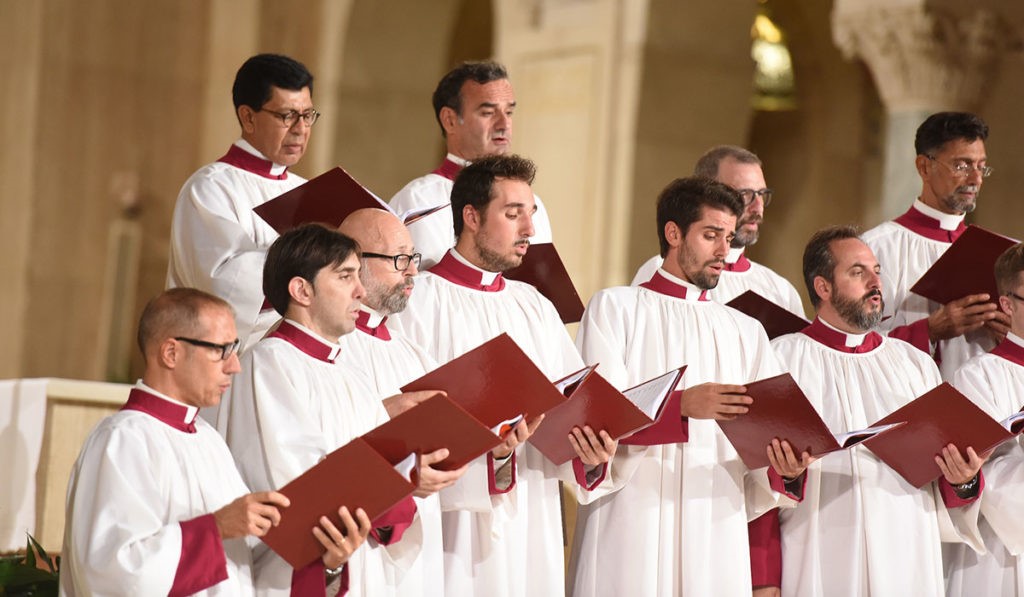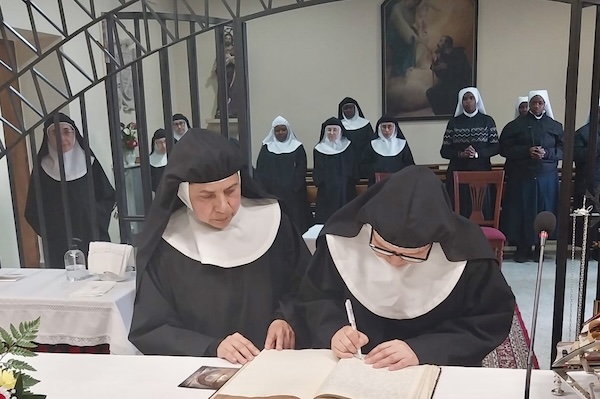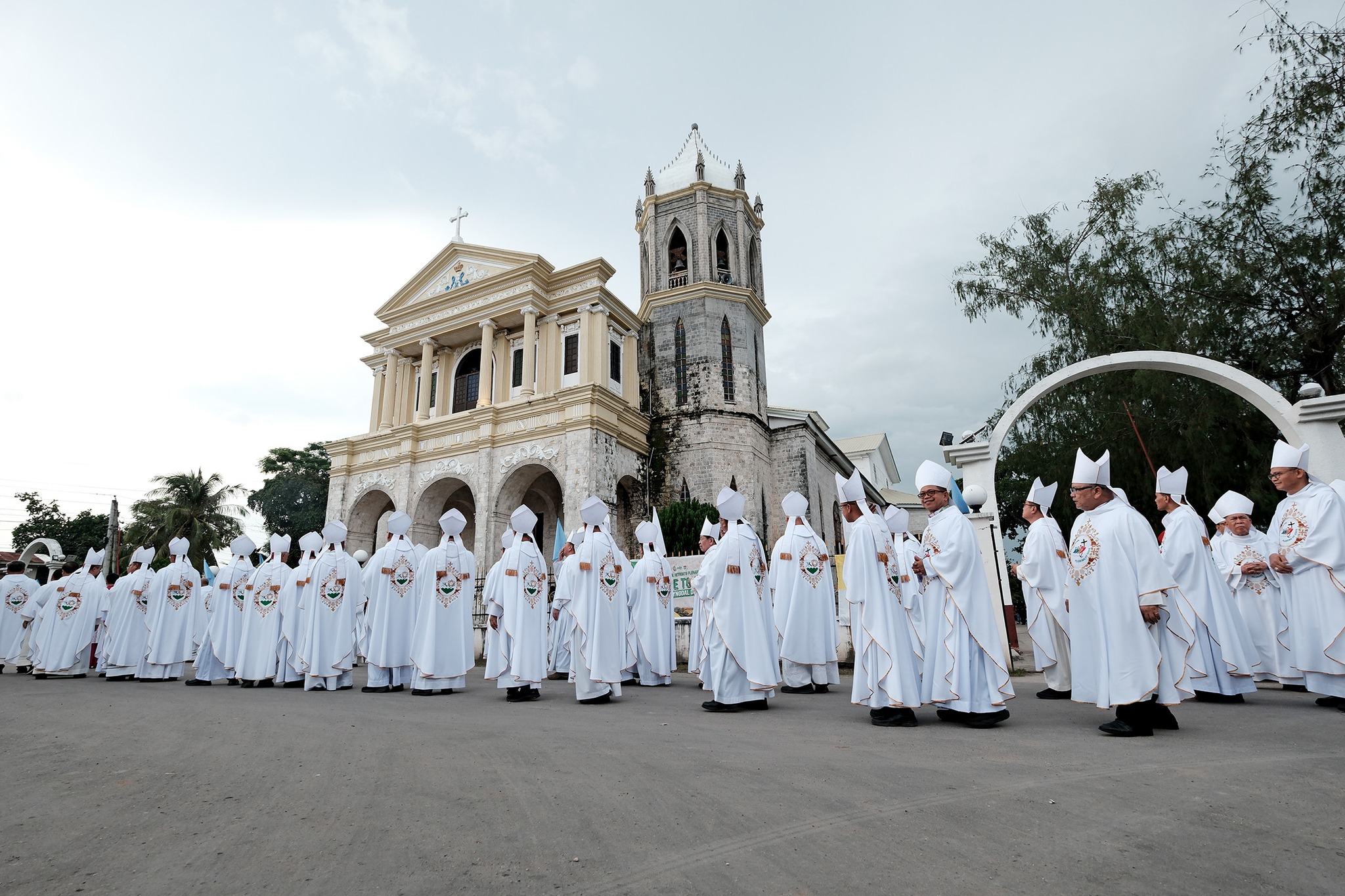– Aurelio Porfiri
In recent decades, there has been a very big debate about the role of choirs in Catholic liturgy. Some people, even within the ranks of the clergy, assumed that choirs were an impediment to the participation of the congregation, even if the idea of “participation” was quite ideological and sometimes really fuzzy. Other denounced this opposition that choirs faced in Catholic worship, an opposition that really had not reason of existing. Indeed we also need to be careful when we use the word “choir.” What is a choir? A choir is a group of people that sing together, we may say. But this is not a good definition in itself. The congregation in church sometimes sings some hymns together, but they are not a choir. There is that famous phrase that says that the first choir in church should be the assembly. It sounds nice but it is not true. Because a choir is not just a group of people that sings together randomly, but a specific group of people previously organized to do so. But still the definition may seem not adequate, because we know that in most of Catholic music, as it comes from our musical heritage, there were no “choirs” (meaning a consistent group of people) but soloists singing one per part. So in a four-part piece, it was common that each part was sung by one person only, as it happened during the Renaissance. Indeed this idea of “soloist versus choirs” should be investigated more. Indeed we have a great tradition of solo singers that was almost removed at the beginning of the past century and that would deserve to be rediscovered.
How many people should should there be in a choir? Here every number will be arbitrary. Can two people form a choir? I am sure that everyone would disagree with this statement. But it is very difficult to give an exact figure. We may say that, in the case of church choirs, the correct number is the one that allows for the proper fulfillment of the choir’s duties during the liturgy. In a very small church, a choir of 80 people would be probably inappropriate, as in a big basilica a choir of 5 people would not be enough.
Indeed choral singing goes way back in our Judaic-Christian tradition. We may just remember what was said in the Bible about the singers of the Temple of Jerusalem, singers that were appointed and regulated by King David himself (Chronicles 1:16-28): “David told the leaders of the Levites to appoint their fellow Levites as musicians to make a joyful sound with musical instruments: lyres, harps and cymbals. So the Levites appointed Heman son of Joel; from his relatives, Asaph son of Berekiah; and from their relatives the Merarites, Ethan son of Kushaiah; and with them their relatives next in rank: Zechariah, Jaaziel, Shemiramoth, Jehiel, Unni, Eliab, Benaiah, Maaseiah, Mattithiah, Eliphelehu, Mikneiah, Obed-Edom and Jeiel, the gatekeepers. The musicians Heman, Asaph and Ethan were to sound the bronze cymbals; Zechariah, Jaaziel, Shemiramoth, Jehiel, Unni, Eliab, Maaseiah and Benaiah were to play the lyres according to alamoth, and Mattithiah, Eliphelehu, Mikneiah, Obed-Edom, Jeiel and Azaziah were to play the harps, directing according to sheminith. Kenaniah the head Levite was in charge of the singing; that was his responsibility because he was skillful at it. Berekiah and Elkanah were to be doorkeepers for the ark. Shebaniah, Joshaphat, Nethanel, Amasai, Zechariah, Benaiah and Eliezer the priests were to blow trumpets before the ark of God. Obed-Edom and Jehiah were also to be doorkeepers for the ark. So David and the elders of Israel and the commanders of units of a thousand went to bring up the ark of the covenant of the Lord from the house of Obed-Edom, with rejoicing. Because God had helped the Levites who were carrying the ark of the covenant of the Lord, seven bulls and seven rams were sacrificed. Now David was clothed in a robe of fine linen, as were all the Levites who were carrying the ark, and as were the musicians, and Kenaniah, who was in charge of the singing of the choirs. David also wore a linen ephod. So all Israel brought up the ark of the covenant of the Lord with shouts, with the sounding of rams’ horns and trumpets, and of cymbals, and the playing of lyres and harps.”
This scene gives us the idea of the importance that King David gave to music for the worship of the Temple. But also the Church always devoted a lot of resources for development of “choirs” (in the broadest sense possible) for the liturgy. Let us just look at some of the magisterial teaching coming from the past century, starting with the magna carta for the reform of sacred music at the beginning of the 20th century, the Motu Proprio Tra Le Sollecitudini by St Pius X (November 22, 1903): “With the exception of the melodies proper to the celebrant at the altar and to the ministers, which must be always sung in Gregorian Chant, and without accompaniment of the organ, all the rest of the liturgical chant belongs to the choir of levites, and, therefore, singers in the church, even when they are laymen, are really taking the place of the ecclesiastical choir. Hence the music rendered by them must, at least for the greater part, retain the character of choral music. By this it is not to be understood that solos are entirely excluded. But solo singing should never predominate to such an extent as to have the greater part of the liturgical chant executed in that manner; the solo phrase should have the character or hint of a melodic projection (spunto), and be strictly bound up with the rest of the choral composition. On the same principle it follows that singers in church have a real liturgical office, and that therefore women, being incapable of exercising such office, cannot be admitted to form part of the choir. Whenever, then, it is desired to employ the acute voices of sopranos and contraltos, these parts must be taken by boys, according to the most ancient usage of the Church. Finally, only men of known piety and probity of life are to be admitted to form part of the choir of a church, and these men should by their modest and devout bearing during the liturgical functions show that they are worthy of the holy office they exercise. It will also be fitting that singers while singing in church wear the ecclesiastical habit and surplice, and that they be hidden behind gratings when the choir is excessively open to the public gaze.” This passage should be commented in depth, but the space of this chapter does not allow for these comments. What we can infer, in any case, was that the choir was given a very high dignity because they perform an “holy office,” as for example with the prescription to dress a specific habit. Also the requirement of being hidden has a specific reason behind it: not to attract attention to themselves but point the attention to the great mystery that is celebrated during the Mass. Women at the time were not allowed to sing in church and the pueri cantores sang in their place, even if this was only one of the possibilities for singing the upper part in sacred composition. Indeed, in the Sistine Chapel choir in Rome, for example, we have the treble voices only at the beginning of the 20th century. The soprano and alto parts were performed either by castrati (male singers that had surgery at a very young age to prevent their voices from changing) or falsettists (male singers that can sing using a vocal technique called falsetto).
Following documents by other Popes such as Pius XI and Pius XII confirmed the prescriptions of St Pius X and even reinforced them in some cases. But also Sacrosanctum Concilium, the Vatican II Constitution on the liturgy, emphasizes the important role of choirs for the worship of the Church: “The musical tradition of the universal Church is a treasure of inestimable value, greater even than that of any other art. … The treasure of sacred music is to be preserved and fostered with great care. Choirs must be diligently promoted, especially in cathedral churches; but bishops and other pastors of souls must be at pains to ensure that, whenever the sacred action is to be celebrated with song, the whole body of the faithful may be able to contribute that active participation which is rightly theirs, as laid down in Art. 28 and 30.” So, even if there is a new emphasis on the concept of participation, nevertheless, the role of choirs is clearly stated also by Vatican II.


 Follow
Follow


